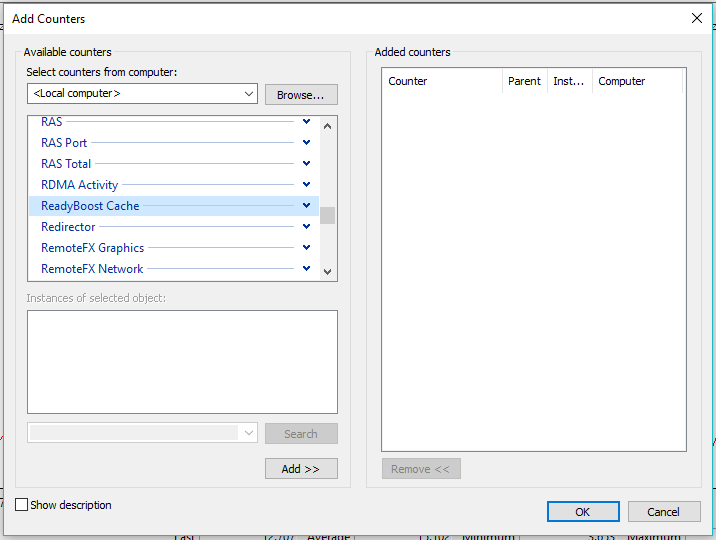
For my USB drive you can see that 440 MB is reserved.
#What is readyboost cache windows
If you open the Windows Explorer and click on the Removable disk, on the right pane you will see that an amount of memory (or disk space) is reserved as ReadyBoost in the file type of ReadyBoost Cache File. Also, the memory manager compresses the pages before writing them into the cache on the flash disk, which means youll get more mileage from each MB. Click Apply to take affect the new settings for ReadyBoost. And because the Windows Readyboost cache on the flash drive is encrypted using AES-128, you dont need to worry about exposing sensitive data if the flash drive is stolen or lost. While the performance gain from ReadyBoost is gone, you dont lose any data and there is no interruption.

What is very cool here is that there is nothing stored on this flash disk that isnt also on the hard disk, so if you remove the flash drive, the memory manager sees the change and automatically goes to the hard disk. If you are running a lot of applications on a system that has limited memory, Windows ReadyBoost will use the flash drive to create a copy of virtual memory that is not quite as fast as RAM, but a whole lot faster than going to the hard disk. Instead, ReadyBoost uses the flash drive to store information that is being used by the memory manager. Now double click on that file and change the Value Data from 0 to 1000 and then press OK.Windows ReadyBoost isnt really using that memory to increase the main system RAM in your computer. Right click on the blank space in that selected USBfolder and click on QWORD (64 bit) Value and after that right click to rename the value to SpeedReadKBs and press enter. This step might not be required, depending on your device. Step 7:ĭouble click on DeviceStatus, and modify the value date to 2. Step 6:ĭouble click on WriteSpeedKBs and change its value data to 1000 (Decimal) or anything larger than that. This would be a USB whose test that failed. Did you fail to identify your flash drive from this extensive list? Then try to find a product which has a value 4 at DeviceStatus. Near the beginning of this long line we notice the Verbatim brand and that helps us identify which USB flash drive we want to enable ReadyBoost on. The registry editor, on this particular key includes all USB drives you ever connected on your computer.Īs you see in the image, all the USB drives that have been detected in the past are shown here – each line is a flash drive, and the pattern goes like this: Navigate to the following registry entry: HKEY_LOCAL_MACHINE\SOFTWARE\Microsoft\Windows NT\CurrentVersion\EMDMgmt Select ReadyBoost tab and tick the box that says Do Not Retest This Device. Open This PC, right click on your USB flash drive and select Properties. Make sure the USB is installed properly and close the AutoPlay window that might pop up. Insert USB flash drive in your USB port directly, not on a USB hub. If you make mistakes, we are not to blame for the problems you might cause.

If you follow it exactly, there should not be any problem at all with your system. The other method, and probably more informative but at the same time more confusing, is to look at the performance counters for the ReadyBoost feature. You will accomplish it by “tricking” the operating system into thinking the device is fast enough.ĭisclaimer: This article will guide you into editing a Windows Registry entry. We will describe a work-around that will allow you to enable ReadyBoost for your device. Of course, pagefile and ReadyBoost can be combined. In contrast to pagefile access from the hard disk, USB access is much faster (but still much slower than RAM access).

USB ReadyBoost allows us to use our flash drive as additional RAM (for memory cache to be exact). Even if you have a device that is not supported. This is done by using USB ReadyBoost feature.

This is where this guide might be helpful for you. So, you might ask – what happens if I only have one flash drive to spare because I do not want to use my brand new device in ReadyBoost? Is there a way to force enable Readyboost?
#What is readyboost cache free
The flash key should be at least 256 MB in size, with at least 64 KB of free space.This is what you will see when you try to enable Readyboost on a slow or old device.īefore even running the test, you might be able to get an idea by checking the system requirements of Readyboost:


 0 kommentar(er)
0 kommentar(er)
